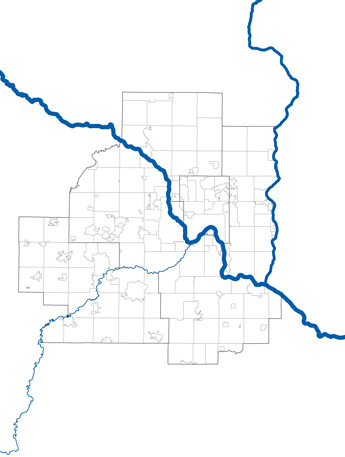 The Twin Cities metro area has three major rivers, hundreds of streams and ditches, and thousands of lakes and wetlands that provide varying amounts of water. Of the major rivers in the metropolitan area, only the Mississippi River is currently used as a source of drinking water.
The Twin Cities metro area has three major rivers, hundreds of streams and ditches, and thousands of lakes and wetlands that provide varying amounts of water. Of the major rivers in the metropolitan area, only the Mississippi River is currently used as a source of drinking water.
The three major rivers are the Mississippi River, the Minnesota River, and the St. Croix River. This map shows their sizes relative to the amount of flow that is likely to occur at least 90% of the time.
Use of these three rivers is limited by a variety of climatic, economic, water quality, regulatory, and ecological reasons.
Other sources of surface water include stormwater and reclaimed wastewater.
Stormwater
More work is needed to evaluate the potential for stormwater reuse across the region, but a rough estimate can be made for the amount of stormwater that would be available:
Given these assumptions, approximately 100 million gallons per day of stormwater water could be available in the region. Stormwater reuse projects are not tracked consistently through the region, so it is uncertain how much stormwater reuse currently exists.
Reclaimed wastewater
Opportunities exist throughout the region to use reclaimed wastewater as a non-potable (not for drinking) water source. Reusing treated wastewater to supplement groundwater and surface water as sources of water to support regional growth, where economically feasible, will promote sustainability goals. Stress on the quantity of water available for drinking water may be reduced by using a nonpotable water source for water needs other than drinking.
Find information on our research of wastewater reclamation.